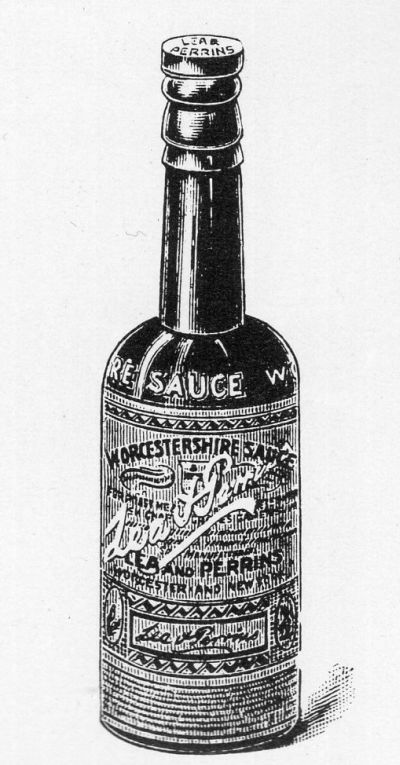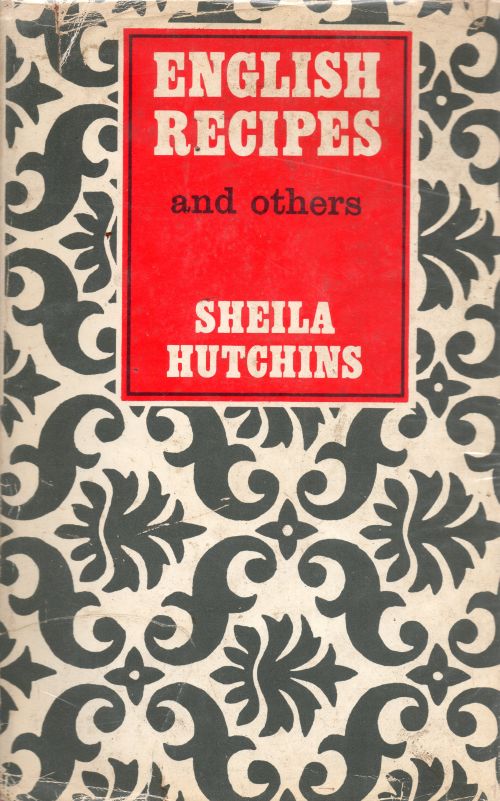An Appreciation of the footnote, with an illustrative digression on Worcestershire sauce.
 The Editor always gives an initial presumption of reliability to a book that includes footnotes (endnotes too, but they are not as handy). An author willing to disclose sources ought, at least in principle, to have the integrity to utilize them with fairness and insight. In this it must be admitted that the Editor frequently has been disappointed; sloppy or disingenuous writers like Barry Castleman or Marcus Rediker and any number of contributors to Wikipedia will cite authorities that do not support, and sometimes even contradict, their arguments. Outliers like the disingenuous Rediker aside, however, footnotes are a good sign.
The Editor always gives an initial presumption of reliability to a book that includes footnotes (endnotes too, but they are not as handy). An author willing to disclose sources ought, at least in principle, to have the integrity to utilize them with fairness and insight. In this it must be admitted that the Editor frequently has been disappointed; sloppy or disingenuous writers like Barry Castleman or Marcus Rediker and any number of contributors to Wikipedia will cite authorities that do not support, and sometimes even contradict, their arguments. Outliers like the disingenuous Rediker aside, however, footnotes are a good sign.
We do not hew to the conventional wisdom that footnotes are distracting vestigial organs that belong only in musty academic articles on obscure or tedious topics, if they belong anywhere at all. A Pulitzer Prize winning journalist of the Editor’s acquaintance is contemptuous of them and favors ‘phantom’ endnotes. No signals to these notes appear in the text. Instead, they get listed following its conclusion, and provide a quoted snippet identified by the page number where the passage occurs to identify some, but not all, of the source: E.g., page 2; “This is risible… ,” “Transatlantic Transgressions,” in the critical, bfia Launch Number (No. 1) at www.britishfoodinamerica.com.
This is better than nothing, but not much; the reader cannot know from a glance at the text whether a proposition, however controversial or contrarian, has in fact got any citation at all. The practice therefore can serve to obscure the fact that in reality no research supports the point. For the assiduous reader, guesswork about whether a source is even cited for a proposition wastes more time than scanning a footnote while reading a text. Anyway, nothing requires an incurious reader to drop her eyes to the note at the bottom of the page; the little note numbers or parenthetical references on the page are not that distracting.
Even those inadequate phantom endnotes seldom appear in much writing about food, so that received wisdom remains not just untested, but also mutates into a parody of itself due to repetition without reference to the original source. The creep of inaccuracy is familiar to any child who ever has played what Americans call telephone tag and the British, with political incorrectness that may appeal to the Tea Party and other bigots, call Chinese whispers.
Lack of citation also can obscure historical analysis in other ways. As noted in “George Orwell and English Food,” in Number 17 of the critical, Orwell resorted to unsubstantiated generalizations with some frequency, not least in his surprisingly prolific writing that involved food; they do not turn out to have much merit.
Similarly, as noted by our essay in the critical from bfia Number 8, authors addressing the origin of cheese straws (oddly enough quite a few authors do discuss the subject) frequently make conclusory judgments unsupported by any authority.
Sheila Hutchins takes a more curious approach in her enjoyable and exasperating English Recipes and others (London 1964). There, recipes and even quoted passages, many of them lengthy, sometimes get attribution but sometimes do not. Remarkably enough, nobody ever appears to have commented on the lapse. That  is too bad, because many of the recipes are intriguing while quotations that may be lively and illuminating are useless for scholarly purposes because we have no inkling who wrote or said them, let alone when they first appeared.
is too bad, because many of the recipes are intriguing while quotations that may be lively and illuminating are useless for scholarly purposes because we have no inkling who wrote or said them, let alone when they first appeared.
Take, for example, the source of an ‘Old Buckinghamshire Baste’ for lamb. It is unidentified but cannot be that old; one of its constituents is Worcestershire, which did not appear until sometime in the first half of the nineteenth century. According to one researcher, John Lea and William Perrins made their first batch in 1837 but “we are not told” by a historian of the product when “Worcestershire sauce started to be made commercially, or when the first bottle of Worcestershire sauce was sold--a glaring omission.” Lea & Perrins did, however, advertise their bottled sauce at least as early as 17 October 1840 in the Manchester Guardian. (Shurtleff 5)
Oddly enough this brings us back to Wikipedia and the notion of the cautionary tale. It transpires that Worcestershire sauce provides a sober example of the online encyclopedia’s unreliability. Its entry on the history of the sauce cites William Shurtleff and Akiko Aoyagi (and misspells Mr. Shurtleff’s name) for the assertion that “the brand was commercialized in 1837” when, as our quotation indicates, they said quite nearly the opposite.
As these brief examples demonstrate, the historiography of foodways itself offers a cautionary tale. Sources are notoriously absent from much culinary history and much of it is poor. When people do provide citations in the field, we take them on trust at our peril. We will try not to speculate about cause and effect, but once again note that, as on the subject of footnotes itself, conventional wisdom can be wrong and ought to be tested. Footnotes help readers do that.
Note:
Shurtleff and Aoyagi should be complimented on their work, a remarkably detailed and judicious annotated bibliography on the printed sources that refer to Worcestershire sauce. An obscure topic from an obscure publisher, the ‘Soyinfo Center,’ those observations should in no way diminish the scholarship of the authors.
Sources:
Sheila Hutchins, English Recipes and others (London 1967)
Brian Keogh, The Secret Sauce: A History of Lea & Perrins (Worcester, England 1997)
William Shurtleff & Akiko Aoyagi, History of Worcestershire Sauce (1837-2012): Extensively Annotated Bibliography and Sourcebook (Lafayette, California, 23 March 2012)

